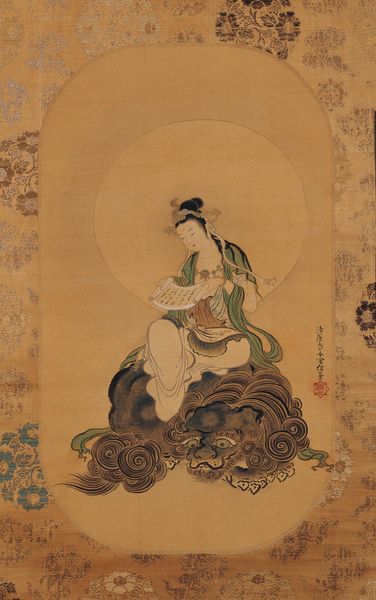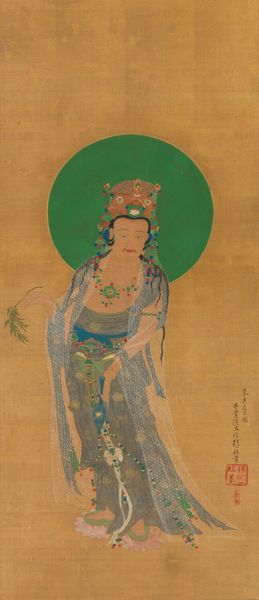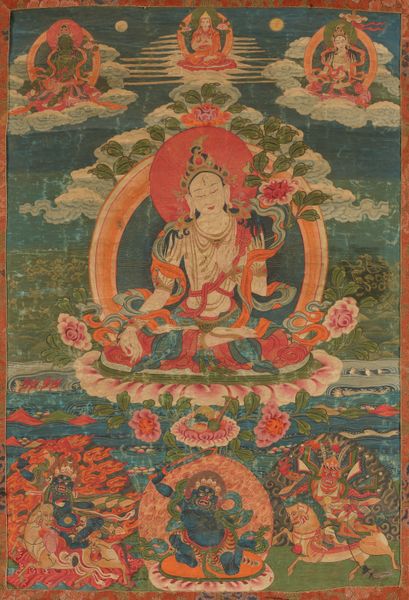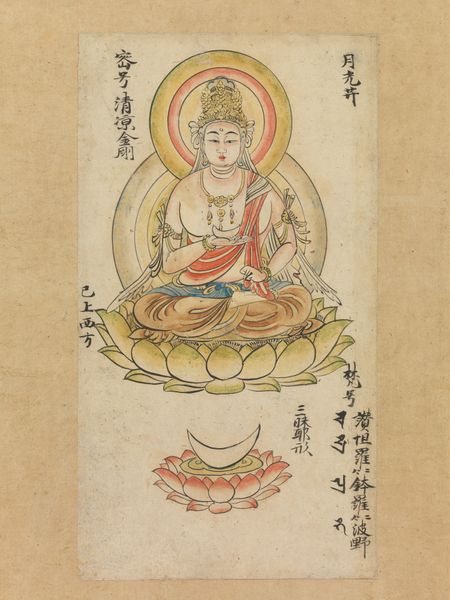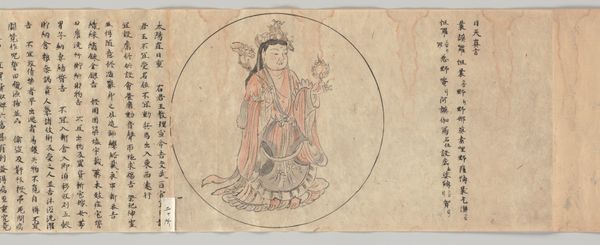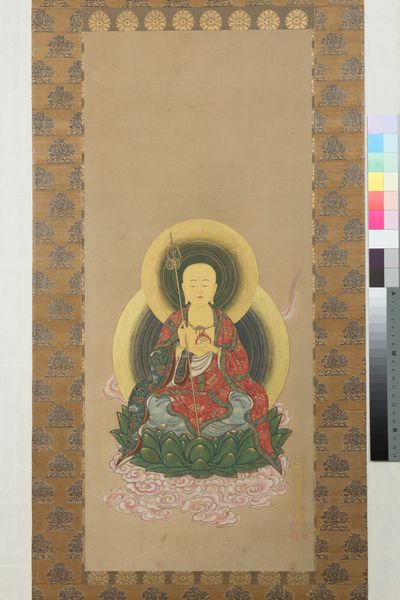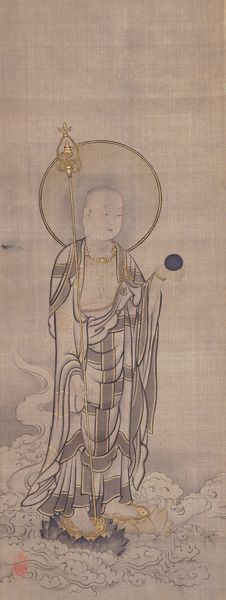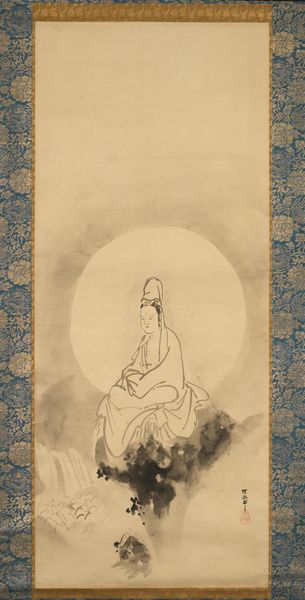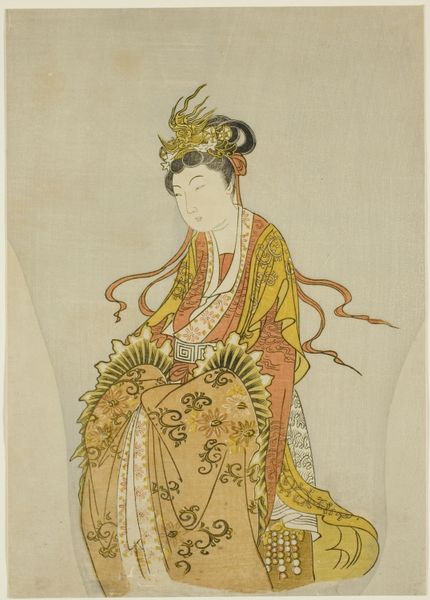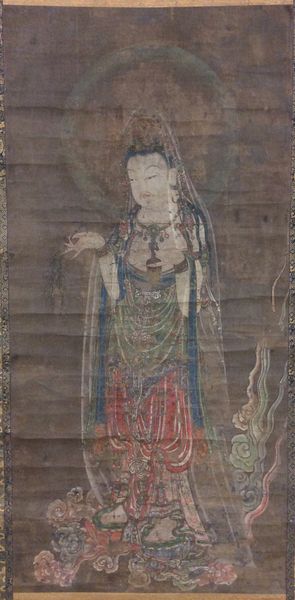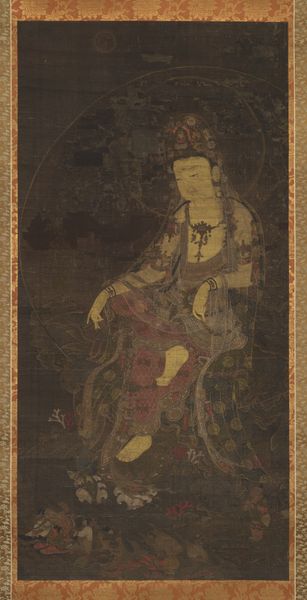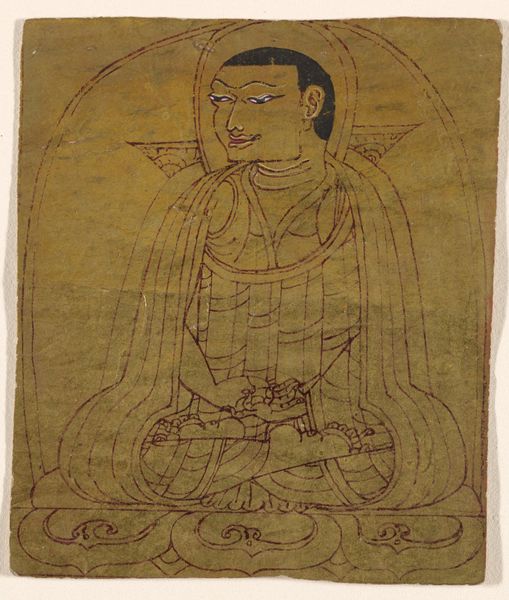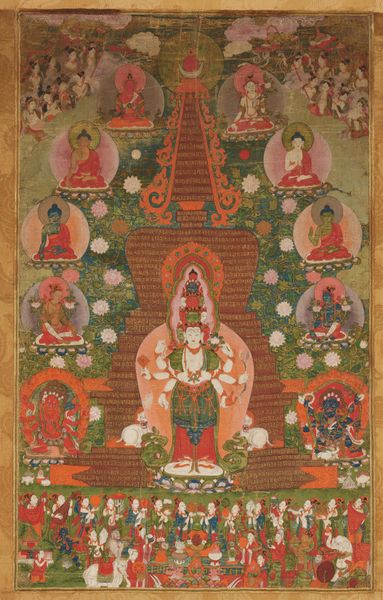
painting, watercolor, hanging-scroll
#
ink painting
#
painting
#
asian-art
#
landscape
#
ukiyo-e
#
figuration
#
watercolor
#
hanging-scroll
#
naive art
#
watercolor
Dimensions: 39 3/4 × 18 5/8 in. (100.97 × 47.31 cm) (image)76 × 28 1/8 in. (193.04 × 71.44 cm) (mount)
Copyright: Public Domain
This hanging scroll of Shō-Kannon was created by Suzuki Kiitsu. The composition is structured around a vertical arrangement, dominated by cool blues above and greyscale tones below. The figure of Kannon, framed by a luminous halo, draws the eye with its intricate details and serene expression. Kiitsu masterfully employs line and wash to create depth and texture. The delicate lines of Kannon’s robes contrast with the soft washes of the clouds and water, creating a dynamic interplay between precision and fluidity. This contrast could be interpreted through a structuralist lens as a binary opposition. The halo creates a semiotic signifier of divinity and purity that is destabilised by the representation of the natural world below. The artist challenges fixed meanings of religious iconography by merging the divine with naturalistic elements. This merging elevates both the subject and challenges us to think about how we relate to the world. Kiitsu's 'Shō-Kannon' invites ongoing interpretation, demonstrating how art continuously reshapes our understanding of cultural and philosophical concepts.
Comments
minneapolisinstituteofart almost 2 years ago
⋮
Shō-Kannon represents the primary form of the bodhisattva of compassion. Seated on a lotus blossom, he holds a lotus bud in his left hand and his right hand forms a mudrā across his chest. Encircling Kannon’s head and torso is a moon-like halo set against a deep blue sky that recalls Kiitsu’s Moon and Waves, also in this exhibition. Kiitsu was part of the Rinpa school revival in Edo, which was led by his teacher, Sakai Hōitsu. Though the primary motifs of Rinpa painting are scenes from nature and classical literature, Kiitsu deftly applies the school’s graphic style to Buddhist iconography.
Join the conversation
Join millions of artists and users on Artera today and experience the ultimate creative platform.
